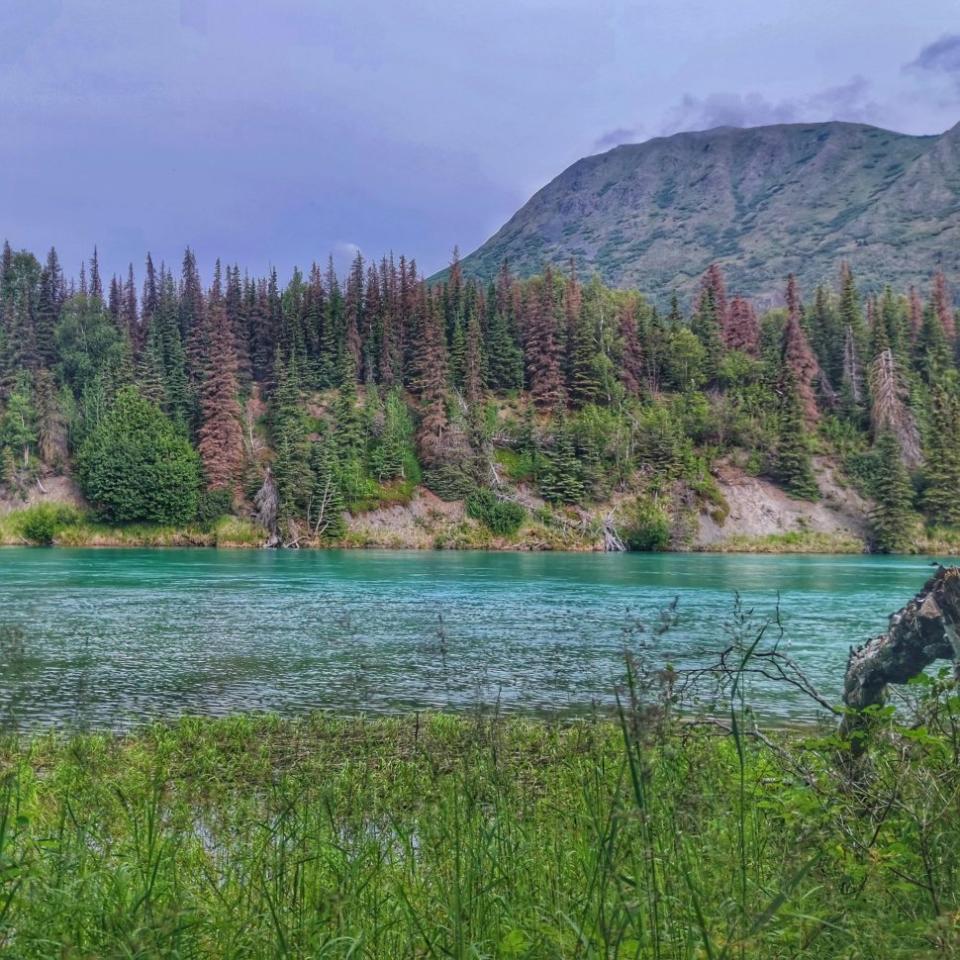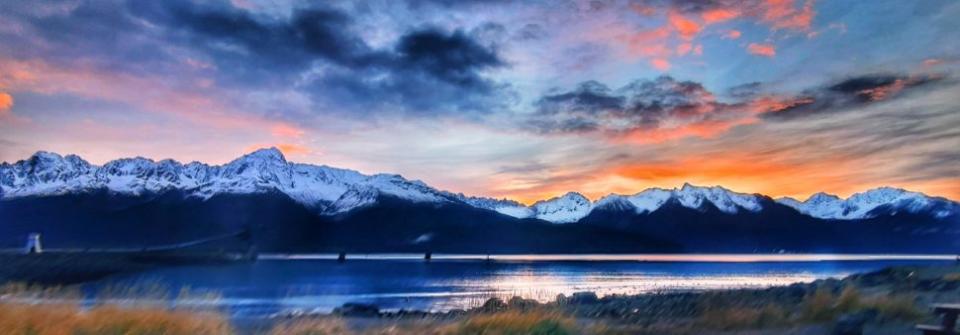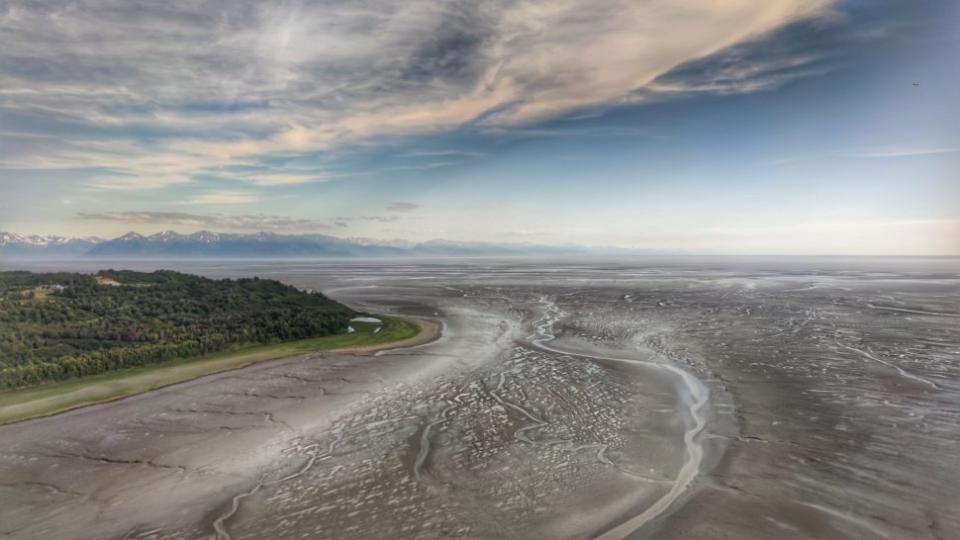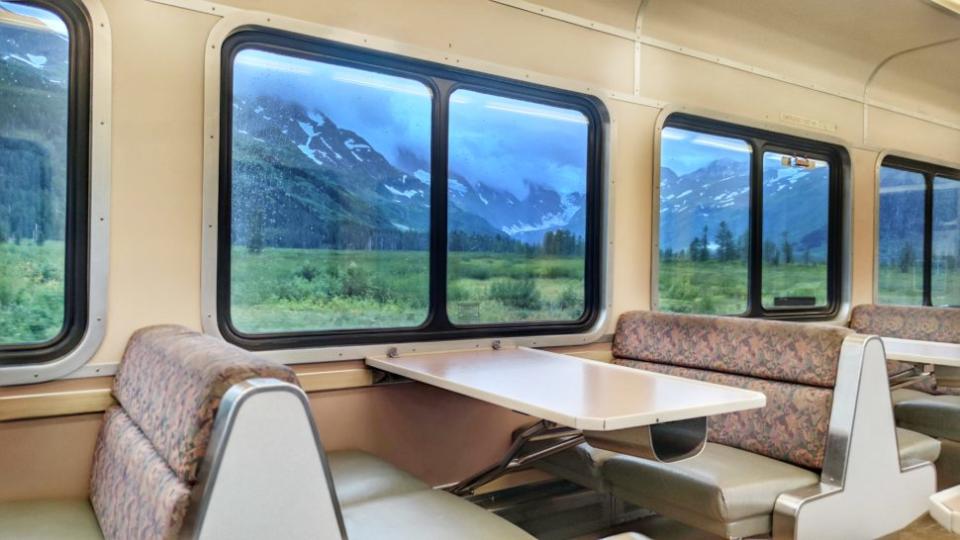Alaska's Formidable, Yet Stunning Seward Highway

One of Alaska’s, and America’s formidable, yet stunning, highways is the Seward Highway. It stretches between Anchorage and Seward, Alaska. Over a span of 100 miles, drivers will see mountains, waterfalls, the most vibrant lakes, and even drive through a rainforest! Seward Highway actually consists of two highways; Highway One and Highway Nine. The only road to get in and out of Moose Pass, Seward and several other Alaskan towns, the Seward Highway is used by both locals and tourists to get to many places on the Kenai peninsula.
The slowly winding, two-lane road has some of the most beautiful sights in the world. Mountains sprout into view left and right as the road bends. Waterfalls pour into blue pools directly off the side of the road. The meandering highway goes through the Chugach Mountains, right into the quaint seaside town of Seward. Spruce trees are tall and thick, lining the alluring road, building a temperate rainforest as drivers cruise along. Mystically blue-green lakes peek through the trees. Rest stops, camping, photo-ops, and even ice cream can be found along the route.

Driving along Seward Highway feels perfectly safe. Without sharp switchbacks or big drop-offs, the road seems innocent enough. There are plenty of turn-outs, many scenic or with a trailhead to even more majestic views calling to hikers. The maximum speed limit is 65 miles per hour.
The Seward highway starts at Turn Again Arm and winds through the mountains before ending less than a mile outside of Seward, just before Lowell Point. Lowell Point may be a name people recognize. It was recently highlighted on CNN because of a gigantic rockslide that overcame the road.
A slide occurs when debris including trees, roots, and mud slide down the side of the mountain and onto the roads. Avalanches occur in the same way. Instead of dirt and mud being the culprit, snow and ice are at play. The rockslide in Lowell Point was about 100 feet long and 20 feet high. No one was hurt during the slide and it took about 10 days for crews to clear the road. In the meantime, a ferry took residents and visitors to and from Lowell Point.
The spring offers the highest danger of avalanches. Melting snow and ice become unsteady and cause a snowball effect down the mountain. Some avalanches are so large that you can feel the ground shake and hear the thunder-like rumble.

Many road improvements have occurred over the last several years, making the road more passable. Future plans include adding turning lanes and pre-emptively removing likely rockslide areas. When a rockslide or avalanche covers the road, crews work double-time to get the road cleared and opened again. Pre-emptively removing loose rocks keeps drivers safe and roads more accessible.
Earthquakes are a common occurrence in Alaska. According to the National Park Service: “With more than 20,000 earthquakes reported annually, Alaska is by far the most seismically active state. Complex, powerful motions of tectonic plates and crustal blocks generate earthquakes throughout Alaska.” Though powerful ones are uncommon, in the 1960s, Seward did experience an earthquake that registered 9.2 on the Richter scale. Over 100 people perished. Some of the roads were destroyed.
Just after an earthquake, there is a chance of a tsunami. Tsunami evacuation signs are noticeable near the waters on Seward highway. Warning sirens are in place. A test alarm goes off daily in Seward, right at noon. Visitors often look confused. Residents go on as if nothing were happening. If the alarm goes off any other time, it is not a warning.

Mudflats are Alaska’s version of quicksand. Completely harmless-looking, this mud is highly dangerous. When the tide goes out, mudflats are exposed. Very thick, but not very deep mudflats can be dangerous because people get stuck in the mud and can’t get pulled out before high tide comes in, drowning them. Warning signs posted along Turn Again
Arm let the few who actually stop here know the dangers. Plus, with so many other places to enjoy the beach, most people drive right on by as though they are not there at all.
The most formidable threat on America’s stunning Seward Highway, as is with all other highways, are other drivers. With a few, short passing lanes and over two million tourists visiting Alaska each summer, the roads get congested. Speeding and drunk driving are also at play, especially in the summer months when the sun doesn’t set.
Winter months may bring white-out conditions, icy roads, and little sunlight. With fewer people on the road though, accidents occur less often than in the summer months. Plan ahead when traveling the Seward Highway, any time of the year. Alaskans generally check the weather and road conditions ahead of time, carry a gallon of water, blanket, and extra gas with them when driving the Seward Highway. As a reminder from Alaska Business Magazine, “drivers can find the most updated information, including road conditions and public access restrictions, on the State of Alaska Department of Transportation at 511.alaska.gov.”

This stunning road is worth the drive. Plan ahead and take time driving the scenic Seward Highway. Stop along the way. Enjoy the scenery at a pull-off or two. Take a hike. Then, visit a waterfall.
Or, try the GoldStar Service on the Alaska Railroad. Since they offer a view only seen by rail, riders won’t be disappointed. Both options are absolutely beautiful.
Related: Using The Alaska Railroad To Discover The Alaska Many Black Travelers Miss

